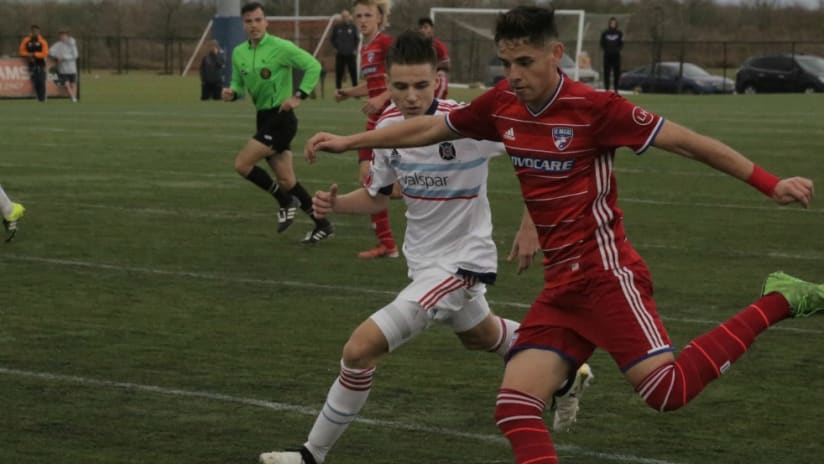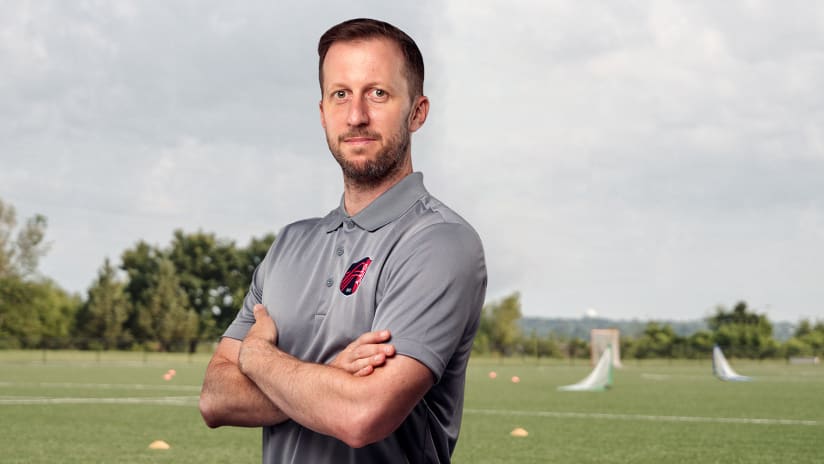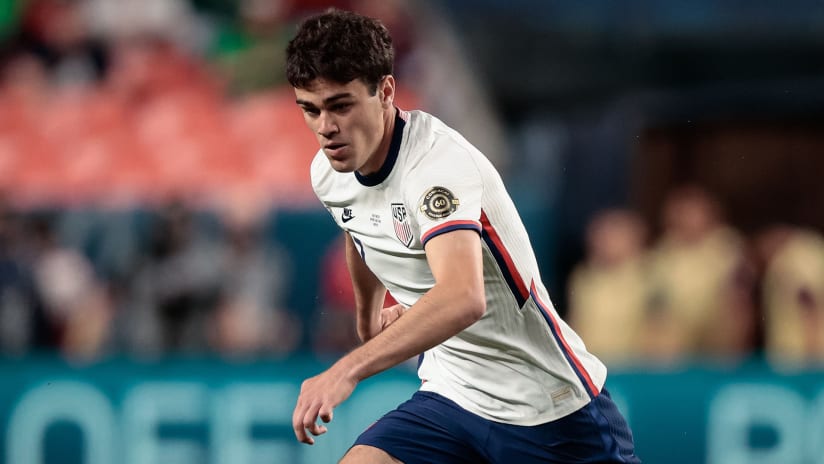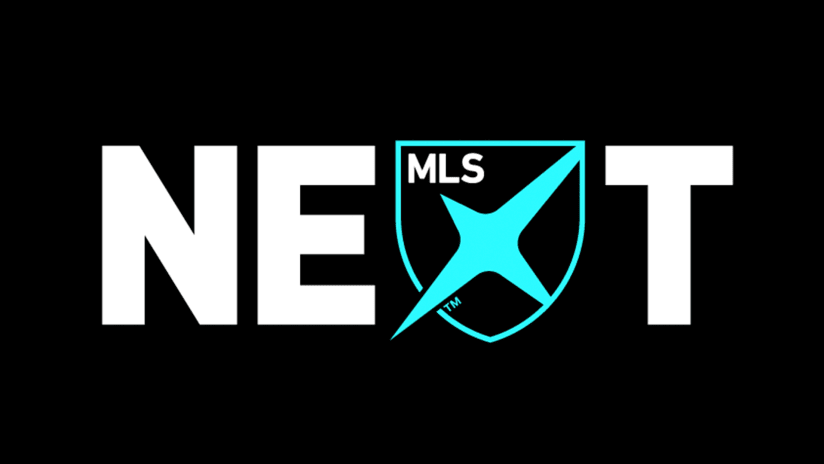The Generation adidas Cup is here. And as far as showcase events go, there are scarcely any better opportunities to see what a number of MLS academies have baking in the developmental oven.
Beginning April 7 and running through the 15th, the Generation adidas Cup mashes together all but three MLS academies with a handful of top international Under-17 sides for one heck of a showcase. MLSSoccer.com is streaming a whopping 34 of those games, which include top foreign academies like Real Madrid, Tigres and River Plate in addition to the league’s domestic offerings.
As you carve out time to catch the stars of tomorrow, here are 10 MLS academy kids you need to clear out the schedule for. Trust me. It’s worth it.
Brayan Padilla, FC Dallas
Who is he: Ever since Brayan Padilla (pictured above) joined the vaunted FC Dallas academy system in 2014, he’s seemingly been on a rocket to one of those Homegrown contracts the club loves to dole out. But it wasn’t until this season that he took his turn in a spotlight that’s been searing hot for a U-16 team that’s won back-to-back national titles. His 22 goals in 18 games is both the largest raw number and the best goal-per-game return in the country.
Why to watch: You’ll notice Padilla almost as soon as you see him. He’s lanky for his age at 5-foot-10, but he moves like an eel as the primary goal-scorer for the most prestigious Under-16 team in the country at the moment. FC Dallas has a loaded slate of games here, including a highly anticipated matchup against Real Madrid’s Under-17 crew. Padilla is the most goal-dangerous player FCD will throw out, and a huge performance against one of the world’s top academies could be a launching pad for even bigger things.
John Hilton, LA Galaxy
Who is he: You may not recognize the name John Hilton, but you’ve probably heard of his Brazilian-sounding moniker: Xuxuh. Hilton’s been one of the most intriguing young Americans to monitor the last couple years as he bounced around clubs in Europe, notably Manchester City and Ajax, before returning to LA to play with the Galaxy (he started his career with the now defunct Chivas USA academy). Hilton’s return was a huge coup for the Galaxy, considering there are few US youth national team prospects at any level with his talent ceiling.
Why to watch: Hilton’s specialized as an overlapping right wingback from the very start, which has helped him grow into the position since first crashing onto the broader national hype scene in 2013. Hilton’s a virtual lock to be the starting right back in the next US Under-17 World Cup cycle, and for the Galaxy he’ll look to occupy space in the final third much in the way we’re used to seeing Dani Alves operate for Barcelona. Pay special attention to Hilton’s defensive spadework. If he’s cleaned up that side of his game, his hype train will know no bounds.
Moses Nyeman, D.C. United
Who is he: There’s no shame in not knowing much about Moses Nyeman, all things considered. There are just two MLS players born in 2003 in Frisco, and Nyeman is one of them. In fact, he’s the youngest MLS player here period, which should pique your interest right away. But there’s a reason he’s here; he might be on the fastest track to a Homegrown deal of anyone in a D.C. United shirt in Frisco. He’s largely played with the Under-14s this year with a couple appearances with the Under-16s, and the creator excelled in just about every opportunity.
Why to watch: This is Nyeman’s biggest stage yet. He’ll operate as D.C. United’s No. 10 on the youngest team any MLS club brought to the Generation adidas Cup. As the youngest individual piece of it, Nyeman has that youthful license to create without thinking twice, which tends to lead to some pretty lovely results. The fact that he won’t even start high school until the fall should contrast nicely with what he’s able to do on the field. Creatively, expect sparks. There’s a reason D.C. United can hardly contain themselves over his potential.
JJ Foe Nuphaus, San Jose Earthquakes

Who is he: When central defender JJ Foe Nuphaus returned from Germany in March, the San Jose Earthquakes practically greeted him with trumpets. Foe Nuphaus left San Jose for Hoffenheim in 2016 to try his hand at the vaunted club’s youth academy, but after playing sporadically in their youth setup he came back to the Earthquakes just in time for the Generation adidas Cup. Once a regular with the US youth national team, Foe Nuphaus can reestablish himself as an enormously enticing Homegrown prospect with a big week in Frisco.
Why to watch: Center backs may not have the crackling excitement their attacking counterparts do, but Foe Nuphaus is worth the price of admission. He’s whip-smart as a modern ball-playing central defender, and the reason he was so highly prized so early is because he has the feet of a No. 10, the intelligence of a No. 8 and the defensive sensibilities of a No. 4. He’s calm enough, in fact, to make a move up to a No. 6 role if needed, although San Jose should find themselves in good stead with arguably the most enticing MLS center back prospect in Frisco.
Gianluca Busio, Sporting Kansas City
Who is he: Sporting KC has done good work integrating pieces from outside its direct geographic bubble, and Gianluca Busio might be the best addition yet. Originally from North Carolina, Busio joined the Sporting KC academy in time for the 2016-17 season, and he’s been arguably the best player in the entire academy ever since. Busio started the season with the Under-14s, but when he scored twice in three games it became obvious he needed a bump up in age. It’s already paying dividends.
Why to watch: The more you watch academy games, the more individual brilliance tends to stand out in a crowd. Busio has that inimitable wow-factor that tends to tear your eye away from the run of play and narrows to his movement. Busio mostly plays as a dropping forward who likes to bull toward defenders in space, but don’t miss his ability from free kicks either. Any foul within 25 yards is Busio territory, and he’s already hit some absolute bangers in his short academy career.
Sebastian Soto, Real Salt Lake
Who is he: The Real Salt Lake No. 9 is like the USC quarterback of MLS academy ball. You can be sure whoever assumes that mantle is both one of the most talented players in the country and walks in the shadows of former greats. So it goes with Sebastian Soto, the man RSL will rely upon above any other to snare goals in Frisco. Only one player in the Development Academy’s Under-16 division has more than Soto’s 20 goals this season, and there isn’t a better forward prospect in one of the nation’s four best academies.
Why to watch: Whether by design or simply by dint of the players they’ve had access to, RSL’s forwards tend to be of the all-around center forward design as opposed to the more back-to-goal No. 9 mold. Soto is maybe the most exciting of those to ever filter through RSL’s academy, and that includes the star-studded 2014-15 crew that broke a ton of DA records. Soto’s movement, vision and overall ability all contribute to one of the most lethal finishers anywhere in the country.
Giovanni Reyna, NYCFC
Who is he: Of anyone on this list, Giovanni Reyna probably requires the least preamble. The son of former USMNT legend Claudio, Reyna’s been in NYCFC’s academy system since it fired up in 2015, and there is no better Homegrown prospect in the Bronx. Reyna hasn’t been able to play up too much with NYCFC simply because the club slowly rolled out its age groups, and it has yet to establish its Under-18 team (that comes next season). But he’s clearly benefitted from the experience, and you’ll notice him almost immediately as a silky operator.
Why to watch: Aside from the obvious genetic curiosity, Reyna’s skill set is worthy of his last name’s legacy. He’s actually not far off dear old dad in terms of preferred play style. He chooses to take a methodical, almost metronomic approach to a game as opposed to jamming the fast forward button. Still, he’s perhaps a bit more of a pure No. 10 prospect than dad was, and he likes to occupy space underneath the strikers and play final balls. But above anything else, the thing you’ll notice right away is his soccer IQ. Reyna, who won’t even turn 15 until November, is almost always the smartest guy on the field.
Efrain Alvarez, LA Galaxy
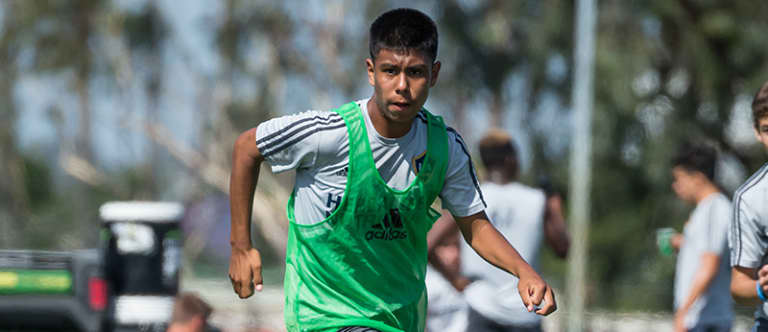
Who is he: You might’ve heard of Efrain Alvarez’s rising star in the murmurings of the league’s resident academy nerds, and for good reason. Alvarez shot onto the scene as a 13-year-old playing up with the Galaxy U-16s and promptly established himself as the best player on the field on a consistent basis. Now, he’s the most exciting attacking prospect in one of the most loaded academies in the country.
Why to watch: To put this as simply as possible, Alvarez can do things almost no other player in the Development Academy can. He’s terrifying in space, commands a wide cone of vision and can do just about anything with the ball he wants. There’s a reason the Mexican and US national team systems are in a tug-of-war over his allegiance. The Galaxy are loaded at this tournament, maybe more so than any other MLS club, but Alvarez is worth your time on his own. Wherever he’s deployed in the final third.
Luca Petrasso, Toronto FC
Who is he: Most Canadian fans probably know this already, but that last name is familiar for a reason. Luca Petrasso is the younger brother of Michael, who made a high profile move from Toronto FC to London’s Queens Park Rangers in 2013. He’s bounced around on loan since then, but it trumpeted the skill in the family. Where Michael prefers to be on the wing, Petrasso is more of a central operator and is noted for being able to spring attacks and hold up play when necessary. What’s more, he’s a Toronto lifer. He was born in the city.
Why to watch: Thumb down Toronto FC’s roster and you’ll soon come across the number next to Petrasso’s name: No. 10. That’s not an idle honor in Toronto FC’s academy, which is loaded down with more Canadian youth national teamers (including Petrasso) than either Montreal or Vancouver – and by a lot. When he’s on the field, Petrasso will be asked to pluck the melody for TFC’s attack, and at least in terms of on-ball skill he’ll be up to the challenge. It’s devilishly difficult to push him off possession.
Damian Las, Chicago Fire
Who is he: It usually takes goalkeepers a bit longer to hit the national consciousness by virtue of the mental realities of the position in addition to the physical, but Damian Las wasted little time, and his first call-up to a US Under-15 Boys National Team camp in 2015 turned out to be prophetic. He’s now one of the most promising young American keepers anywhere, and he’s quickly moved into a place of prominence in the Chicago Fire academy. There’s a reason he’s wearing the No. 1 shirt in Frisco.
Why to watch: The most obvious facet about young goalkeepers’ talent sets at this age – Las, born in 2002, is one of the youngest players at the GA Cup at any position – is a lack of knowledge about game states. Las, though, is uncommonly smart for his age, and he has an advanced sense of where the attack is coming from and how to position himself to best meet the challenge. On a physicality-mentality spectrum, he definitely favors the latter, which should help his progression as both a club and national team player of serious note.

